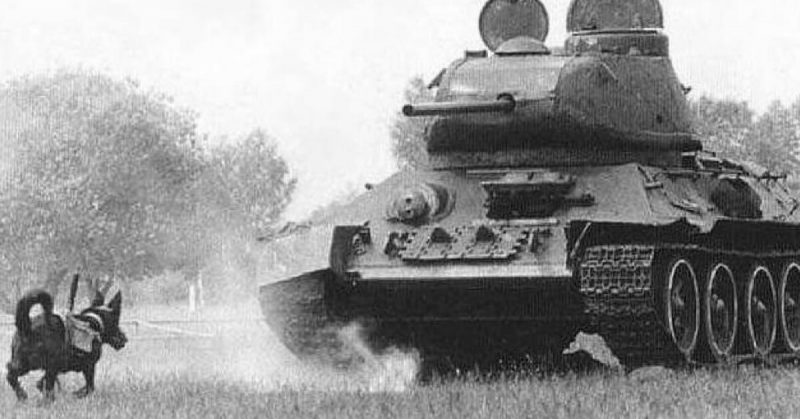Weapons come in all shapes and forms. Some are produced from metal, some from chemicals, and others are animals.
The “anti-tank” dog falls into this last category. They were not fearless, they did get scared, but, for the most part, they did their job.
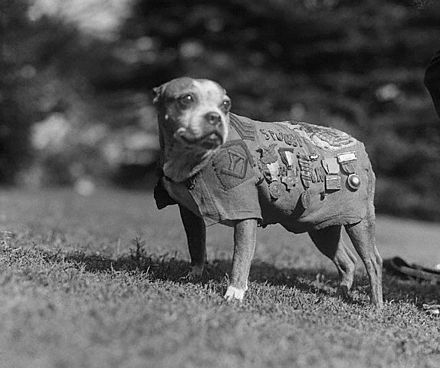
One of the biggest users of anti-tank dogs was the Soviet Union, but they were not alone.
Early Use
The anti-tank dog has a surprisingly long history. It was first utilized in World War I. Their tasks were limited to search and rescue and warning soldiers of impending gas or artillery attacks.
In the 1920s the Soviet Union put more emphasis on dogs for multiple uses. They planned to use dogs for many things including communication and search and rescue.
German Shepherds were the favored breed. The Soviet Union lacked trainers or places to train dogs, so they recruited instructors and built training camps.
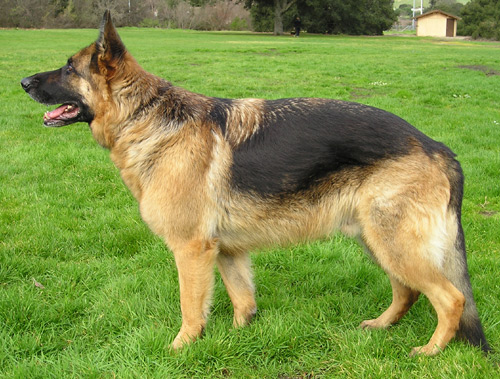
What Were They Trained to Do?
The original idea was complicated and was considered a failure. The dog would run up to a tank with a bomb strapped to its body.
Once there, it was to pull a cord that would release the bomb. It would either be set to a timer or detonated by remote control.
The Soviets tested this idea out over the course of six months, and the results were not encouraging. The dogs were confused. If they were attacking a single tank, it was fine.
If there were multiple tanks, the dogs got confused, resulting in them returning to their controller with the bomb still intact. This could kill both the operator and the dog.
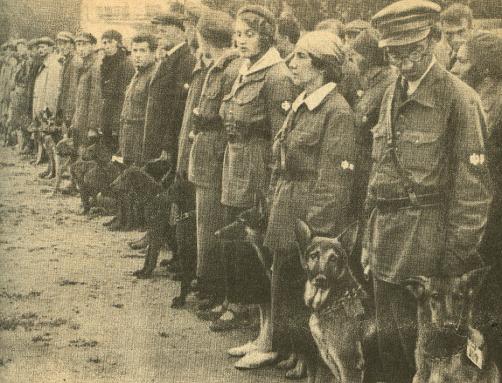
The next plan was that the dog would die, but the bomb would successfully detonate. The dog would run underneath a tank, with something sticking out of the top of the bomb, so once it made contact with the tank, it would explode.
How did they teach these dogs to do it? They used food. They starved the dogs and then put food underneath the tanks to encourage the dogs. They also had to train the dogs to get used to the sounds of battle.
The dogs were strapped with 20 pounds of explosives, and it was hoped the explosion would disable the tank.
Soviet Use in WWII
In World War II over 40,000 anti-tank dogs were used by the Soviet military mainly from 1941, when the first dogs arrived at the frontline. It was not a great tactic by the Soviets and backfired on them as the dogs were scared.
While in training, the Soviets tried to simulate the battlefield experience as much as possible. Their attempts failed.
The dogs were trained on tanks with diesel engines and the Germans used gas. Why is this important? Different sounds and smells produced by the tanks.
When the first 30 dogs were sent to the frontline, only four successfully detonated near a tank. The dogs were not prepared for all the mayhem, including gunfire.
The dogs refused to go under the tanks. Some dogs ran alongside a tank, and were shot, or got killed before they were anywhere near a tank.
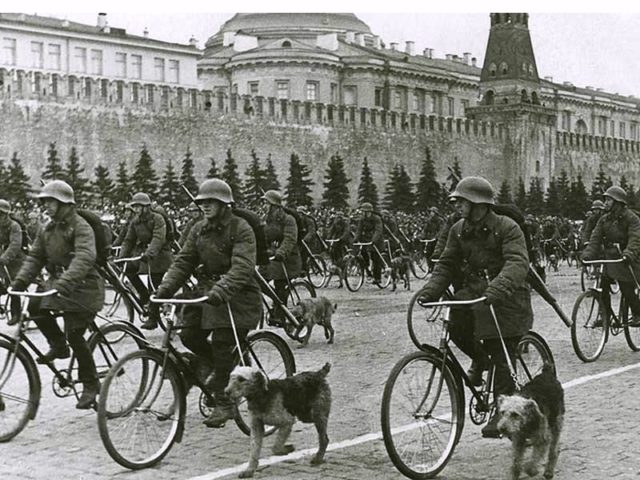
Sometimes, the dogs came running back to the trenches, or to where their controller was. On several occasions, the bomb detonated, killing Soviet soldiers, or its controller. Of the 30 dogs, six exploded upon returning to the trenches.
Inevitably, the operator had no option but to shoot the dog before it reached him.
Decline of Soviet Use
Use of the dogs declined just a year after they started. The Soviets still did use dogs, but not as widespread as they had hoped.
It is not known how successful the dogs were, although it is estimated more than 300 tanks were destroyed. Towards the end of the war, training efforts for dogs shifted to mostly service base use instead of anti-tank use.
The Soviet Union and then Russia did continue to train dogs for anti-tank use up until 1996.
Others Who Have Utilized Them
The Japanese were given 25,000 dogs for use during World War II, also for anti-tank use.
The Viet Minh also tried dogs, as well as the United States. The US had many of the same issues as the Soviets, but their dogs were not sent into service, as the program was canceled while training was still going on.
Anti-tank dogs also saw use in the last ten years in Iraq. Insurgents used a remote control to detonate the explosives, but much like everyone else, it was largely unsuccessful, resulting in them using donkeys instead.
